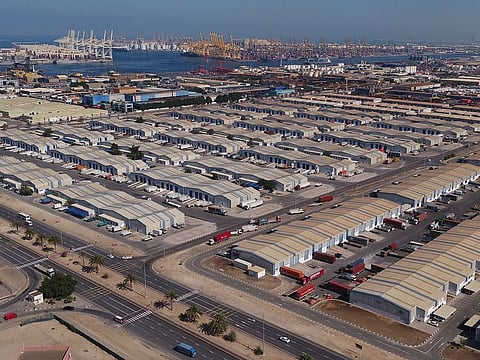Dubai among top global ports in 2022 shipping index
Investment in infrastructure, business diversification make Dubai an attractive city

Dubai has topped the region and ranked fifth internationally on the Xinhua-Baltic International Shipping Centre Development (ISCD) Index, it was announced on Monday.
Overall, Singapore has secured the top spot once again for the ninth consecutive year on the index published jointly by Chinese state news agency Xinhua and global maritime data provider Baltic Exchange.
Singapore scored 94.88 out of a possible 100 points, while second on the list was London with 83.04 points. Shanghai stood third with 82.79 points, while Hong Kong (79.15) and Dubai (75.74) wrapped up the top five.
“Singapore has earned its longstanding spot at the top of this index due to its wide and established ecosystem of professional global maritime services, good governance, ease of doing business and large and strategically situated port,” the report said.
Rotterdam, Hamburg, New York/New Jersey, Athens/Piraeus, and Ningbo-Zhoushan completed the top 10.
Dubai has “has heavily invested in infrastructure, which has in turn attracted business and tourism. Today, maritime plays an important part in Dubai’s diversified mix of industries”, the report said.
“It has a lot to shout about with its established ports including DP World-operated Jebel Ali and Mina Rashid, and purpose-built Dubai Maritime City - a 2.5 sq.km site developed in 2004 and situated between Mina Rashid and Dry-docks World. The latter also includes a free trade zone offering tax relief, and this, combined with a 2020 UAE decision to enable foreign ownership of certain maritime businesses, furthers its ambitions to position itself as an attractive option for international business and investment.”
The report also highlighted how Dubai offers multiple free zones with easier business regulations.
“There are number of free zones that allow 100 per cent foreign ownership of businesses. Mainland business regulations allow full foreign ownership in 122 economic activities across 13 sectors and offer 100 per cent profit repatriation,” Dubai Maritime City Authority told the Xinhua-Baltic ISCDI Report.
In February 2022, Dubai Maritime City announced a $38m plan to invest in roads and infrastructure to better integrate the maritime city and attract more businesses.
“The major upgrade to the roads and infrastructure at Dubai Maritime City is part of our efforts to support the Dubai Maritime Vision 2030, which aims to develop, regulate and enhance the local maritime industry and strengthen Dubai’ s position as a world-class, premier international maritime hub,” said Mohammed Al Muallem, Executive Vice President, DP World at the time of the announcement.
“A successful shipping centre provides everything that the international shipowner might need. It offers an efficient port with good onward connections and a competitive port services environment. It needs to be a one-stop shop for the shipowning and chartering community, providing access to world-class finance, legal, shipbroking, IT and classification services. It should be a place which is able to attract the best international talent. It should have a robust and transparent legal system, backed up by efficient courts and arbitration services,” Baltic Exchange CEO Mark Jackson said.
Turbulence expected
The report also highlighted how the container shipping market has seen unprecedented turmoil over the past year, with the coming year not offering any respite either.
“In the past year, container vessels were at times chartered in at rates exceeding $150,000 per day, whereas the same vessels before the pandemic had commanded a charter rate of $6,000-10,000 a day. Vessel reliability become so poor that on the Pacific, more than 90 per cent of the vessels were delayed, and at its worst the average delay was 19 days per vessel. The average transportation time from when the cargo was ready at the exporter in China until the customer took delivery in the US went from 45 days to 112 days,” the report said.
Capacity hike
The year 2023 will see the injection of 9 per cent new capacity owing to the many new vessel orders placed by the carriers in 2021, and this will lead to plenty of capacity being available on the main deepsea trades. However, the industry will also see the new environmental rules, IMO 2023, implemented which will mainly impact the smaller vessels. This, in turn, will skew the market such that some places might still see vessel capacity shortages for shortsea and feeder trades as the new vessels being delivered are predominantly large vessel unsuitable for smaller trades.
War impact
The ongoing Russian-Ukraine conflict and lockdowns in major cities have led to severe demand destruction in the oil market in 2022. Before the conflict, the market was expecting a recovery in oil demand and the unwinding of supply curbs by OPEC+ this year, the report noted.
“However, soaring oil prices, slowing economic growth and lockdowns are likely to curb global oil demand growth by 1 per cent in 2022. Global oil demand is now likely to return to pre-Covid levels in 2023 instead of 2022,” it said.
In the long run, oil demand growth is expected to decelerate after 2023 with a progressive shift towards demand towards clean energy, the report said.
Sign up for the Daily Briefing
Get the latest news and updates straight to your inbox





